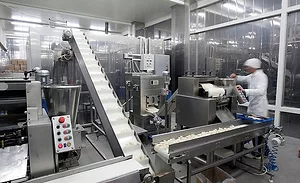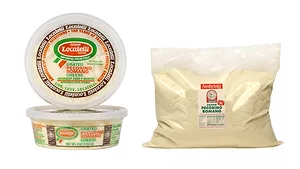These Food Plants are Fabulous for Very Different Reasons
October 16, 2023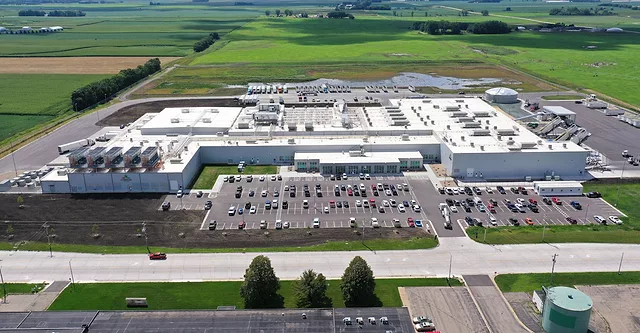
These Food Plants are Fabulous for Very Different Reasons
October 16, 2023Conagra Brands’ ‘Green Jay’ was created to improve throughput and efficiency for the company’s Birds Eye brand. Image courtesy of Conagra Brands
The staff here at FE thinks that there are a lot of ways a food plant can be fabulous. Last year we extended the traditional definition of “food plant” slightly by including a vertical farm. Our pair of selections this year reflect more of what one would expect by the term “food plant,” but we still think that some of the qualities we consider to make a food plant fabulous might surprise a few of you.
Conagra Brands’ “Green Jay”
Conagra Brands opened the doors to its 250,000-sq.-ft. fresh pack vegetable facility for peas, corn and rice in September of last year. The Waseca, Minn., plant replaced a 92-year-old facility that suffered from an, “aging infrastructure that presented challenges to process frozen peas and corn from the regional and local fields in a safe and efficient manner,” according to the company. The new greenfield facility was designed to serve the company’s Birds Eye brand to meet increasingly stringent food safety requirements as the FDA pushes the industry toward more ready-to-eat (RTE) frozen vegetables. But while many manufacturers are also dealing with the challenge of increased food safety requirements, completing a fresh pack processing facility adds the increased difficulty of a complex schedule. Once seeds go in the ground and the commissioning schedule is set, there’s no other choice but to get the facility up and running on time. Failure to do so would mean a lost season.
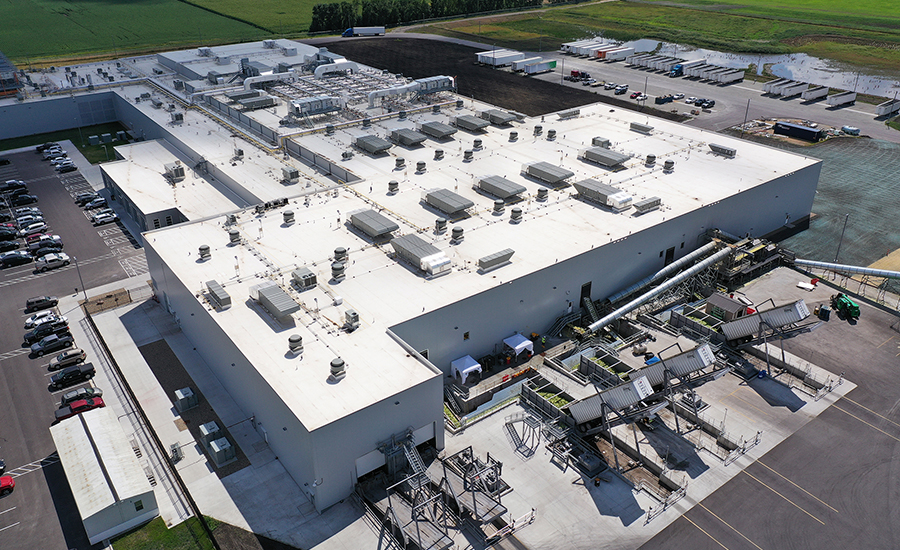
A design-build approach was used to meet the project team’s 23-month schedule encompassing all facets of the process from design to commissioning. Unfortunately, the plan was created before the impact of Covid-19, which led to complicating the meticulously booked process. The outbreak, of course, created supply chain and lead times issues without the ability to meet in person and resolve them—including issues that needed to be addressed before the Minnesota winter took hold.
Conagra selected Foth as its partner to construct the facility, and had key contributions from Boldt, Bassett Mechanical and Strand Associates to overcome these challenges by instituting a collaborative, inclusive approach to the fast-track project. Virtual meetings were used to maintain contact when in-person meetings weren’t available, including 3D modeling and virtual reality. Creative thinking was used to overcome having to make installations out of order because of lead time problems. New tools and procedures were developed to maintain vendor tracking.

Despite all the challenges, the Waseca facility was completed on time and met Conagra’s requirements. First, the raw and RTE areas are separate. It also takes fewer than six hours for produce to come in from the field, go through individual quick freezing (IQF) and get packed, and the steps include a 100% vision inspection system with auto reject for peas and cut corn, as well as a 100% x-ray inspection. An enhancement to the facility’s technology from rotary to horizontal blanching helps achieve the desired log kill, while the controls are designed to provide for a consistent flow of product to the blancher and freeze tunnel.
Helping to deal with the staffing issues of the post-Covid world are the automated systems Conagra installed. New systems aid with truck unloading, and there’s an enhanced and balanced corn-cutting feed system with recirculation and vision systems. Tote filling and the subsequent transportation to frozen storage have also been automated. These systems improve efficiency while also driving personnel safety.
The facility’s capacity for steam is 78,000 lbs. of steam per hour, and the ammonia refrigeration capacity is 142,285 lbs. (6,000 tons). In terms of electrical power, the facility’s capacity is 30 Megawatts. And while the facility’s capacity is much greater than that of the facility it replaced, the new facility uses approximately 25% less water per pound of product produced than its predecessor. Additionally, Green Jay has the capacity to processes approximately 20% more vegetables compared to the facility it replaced, with cut corn or peas at 84,000 lbs./hr., and a max flow of 18,000-22,000 lbs./hr. of cob corn.
Graeter’s Ice Cream
Traditionally, the facilities we’ve covered as Fabulous Food Plants have been new and equipped with technology to set them up for the future. But this next facility is one that’s addressing the future by sticking to the past. Graeter’s Ice Cream in Cincinnati isn’t as new as Green Jay, but it’s not exactly old, either. The facility was built 13 years ago, but what makes this facility fabulous is its decided lack of automation.
Looking for a reprint of this article?
From high-res PDFs to custom plaques, order your copy today!
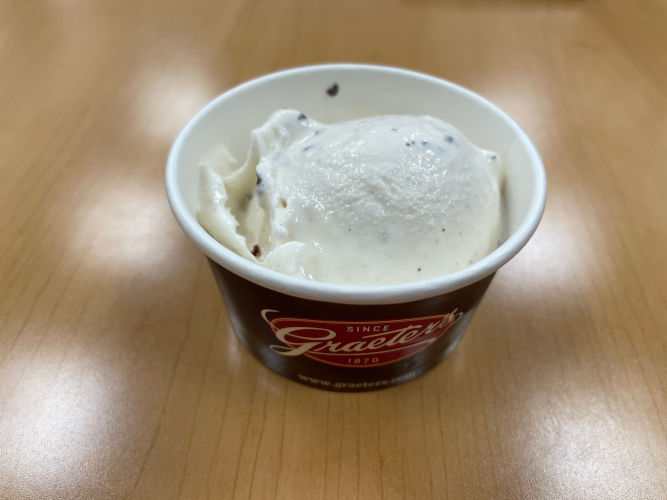
A driving force behind Graeter’s business model is anticipation. The company’s been able to cultivate a dedicated customer base by limiting not only the number of flavors it produces, but by limiting the quantity of those flavors. And seemingly thrown in for fun are even more limited runs of limited-edition flavors.
This model of driving demand through scarcity wouldn’t work if the product itself wasn’t of the highest quality. But the speed with which some flavors sell out and the dedication people have to their favorites proves that the model is working. In fact, Graeter’s isn’t looking for aggressive expansion for the sake of profit. That’s not to say the company isn’t looking to make more money, it just means that it’s only going to pursue new possible ventures if it can be absolutely certain that the level of quality won’t drop. So what makes how this ice cream is produced so special? The answer is that it’s handmade.
To ensure that its ice cream has the same flavor and texture that made it a hit with consumers when it first debuted in 1870, Graeter’s uses the same freezing process. While there are some machines to help the process along, the steps taken are the same that were used more than a century ago—in the case of the vanilla flavor, right down to the same source of the vanilla beans.
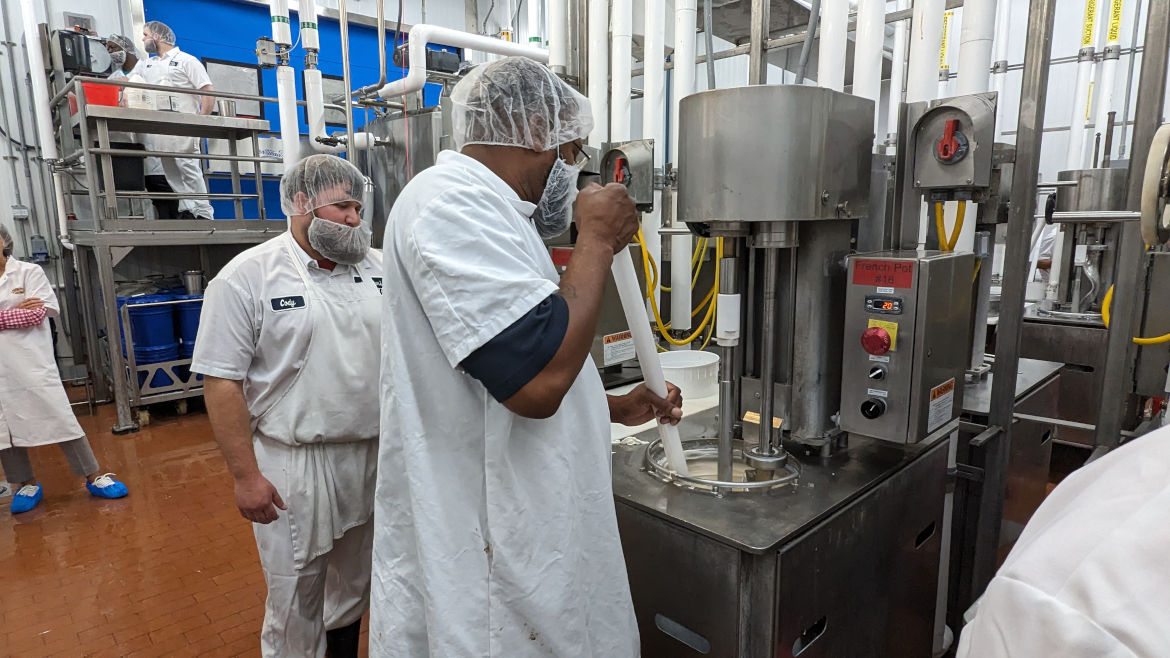
Instead of actual machines, the staff are in sync and act like a well-oiled machine. They conduct their tasks around the tightly spaced floor with a rhythm that’s often done with the accompaniment of music, either from the radio or from the workers themselves singing. While making Graeter’s Chocolate Chip ice cream, for example, giant blocks of chocolate are melted in a vat, transferred to buckets and then poured into the custom-made French pots full of vanilla ice cream that’s been hand stirred. As the chocolate chills in the pot, it’s spun around and the centrifugal force combined with the rapid cooling breaks the chocolate up into uneven, bite-sized chunks.
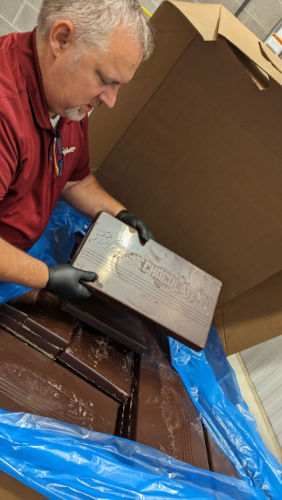
It’s at this point the term “handcrafted” really comes into play. The ice cream is transferred from the pot to a packing station, where an employee scoops the relatively soft ice cream out with a trowel and into a pint—yes, by hand. The facility is capable of producing anywhere from 30,000 to 70,000 pints per day. The number of units produced depends on where the company is in the process of that flavor. For example, they’ll try to ramp up the number of units that are sent out the door when they first start on a flavor. After that, they fall into a “groove” with a slightly less frenetic pace.
Employees are all cross trained for various parts of the production process. The idea is to prevent burnout from doing some of the more repetitive, less mentally engaging tasks. The company says that the constant rotating of duties helps both with employee retention as well giving employees a sense of ownership and understanding of the process.
Graeter’s plan sees its product hitting the ice cream section in around 4,000 grocery locations, mostly in the Midwest via Kroger. The company also has its own retail shops throughout Ohio and in neighboring states, totaling 55. Peach is the most difficult to produce, and Black Raspberry Chip is the company’s best seller.





